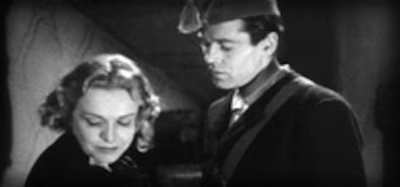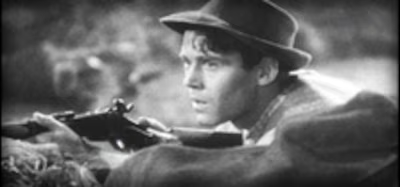Madeleine Carroll

About
Biography
Filmography
Family & Companions
Biography
Nicknamed The Queen of British Cinema, lovely Madeleine Carroll possessed the sort of splendor and poise that one would readily identify with royalty. An excellent student, Carroll could have pursued any number of vocations or higher forms of learning, but exposure to the University of Birmingham's drama society created a love for acting that eventually earned her roles in West End stage productions. Motion pictures soon followed and with her remarkable screen presence and convincing performances, Carroll quickly rose up the ranks to become an A-list talent. A pair of early Alfred Hitchcock films, "The 39 Steps" (1935) and "Secret Agent" (1936), further cemented her popularity and confirmed Carroll as an archetypal blonde Hitchcock heroine. Offers soon came from Hollywood, where she quickly found additional fame in "The General Died at Dawn" (1936) and, most famously, "The Prisoner of Zenda" (1937). Her extraordinary rise proved so lucrative, Carroll was the world's highest paid actress for a short time. Following such movies as "North West Mounted Police" (1940) and "My Favorite Blonde" (1942), she stepped away from moviemaking to help in the overseas war effort. While she acted periodically after World War II, Carroll was mostly content to let her career wind down. One of the great beauties of early sound cinema, Carroll's innate intelligence and sophistication was communicated exquisitely in her portrayals and added an extra level of interest to even her lesser outings.
Edith Madeleine Carroll was born in West Bromwich, England on Feb. 26, 1906. With a French mother and a father who was a professor of languages, she grew up in an environment that encouraged learning and did very well in school. After earning a Bachelor of Arts degree from the University of Birmingham, Carroll was poised to fulfill her father's request that she use her education and fluency in French to study at the Sorbonne. However, by that point, Carroll had discovered a new passion, thanks to the university's drama society. Discovering that she possessed a natural talent for performing, Carroll began to seek out acting jobs. After some time, she secured a role in a West End production of "The Lash" (1927) and went on to land steady work with a touring company. Her abilities and considerable beauty made Carroll a natural target for film producers and she debuted in the war drama "The Guns of Loos" (1928). Other offers quickly followed, and after a handful more silent features, "The American Prisoner" (1929) allowed moviegoers to hear her voice for the first time. Thanks to those features and follow-ups like "The W Plan" (1930), "Escape" (1930) and "Madame Guillotine" (1931), Carroll's popularity increased to the point where she was considered to be the country's preeminent film actress.
That year, Carroll wed her first husband, Captain Phillip Astley of the King's Guards, and announced that she would be leaving the world of acting. Thankfully, this absence proved short-lived and Carroll was back on British movie screens in such pictures as "Sleeping Car" (1933) and "I Was a Spy" (1933). The latter was a major ticket seller and also made some waves in America, which prompted 20th Century Fox to bring Carroll to Hollywood for John Ford's "The World Moves On" (1934).She soon embarked on her best remembered credit from this era, Alfred Hitchcock's "The 39 Steps" (1935), which cast her as a young woman who innocently becomes involved in a spy plot. Displaying wonderful chemistry with lead and fellow Brit Robert Donat, Carroll only figured prominently in the second half, but made an indelible impression and her superbly crafted and performed film was a critical and financial triumph. Carroll and Hitchcock reteamed the following year for "Secret Agent" (1936), with John Gielgud stepping in for Donat. Blending humor and thrills in a less satisfying manner than its predecessor, "The Secret Agent" did not have the same impact, but still furthered the careers of its director and leading lady. Although Hitchcock's work contained at least one antecedent in "Blackmail" (1929) star Anny Ondra, it was Carroll's brand of the icy, sophisticated blonde heroine that became a later staple in the director's films.
In the wake of "The 39 Steps" (1935), Hollywood came knocking once more. Carroll was paired with Gary Cooper for "The General Died at Dawn" (1936) and Ronald Colman in "The Prisoner of Zenda" (1937), with the latter becoming a romance classic. Thanks to these major releases, Carroll's popularity increased to the point where she was able to command $250,000 per picture, an astronomical sum for the time and more than any other actress for a brief period. Radio fans were also able to appreciate that lovely speaking voice on "Madeleine Carroll Reads" (1938), which found her reading samples from recent books. Additional roles followed in fare like "Honeymoon in Bali" (1939), "Safari" (1940), and Cecil B. DeMille's Technicolor epic "North West Mounted Police" (1940). Around this time, Carroll wed her second husband, actor Sterling Hayden, with whom she had previously worked on "Virginia" (1941), before starring with Bob Hope in the farce "My Favorite Blonde" (1942).
However, unfortunate events made "Blonde" her last film for some time. During one of the German bombing raids on London, Carroll's younger sister, Marguerite, was killed. Now a naturalized American citizen, Carroll decided to put her career on hold and dedicate herself to the war effort. Unlike most performers who did this via the USO, Carroll was determined to serve directly and did so at an American Army field hospital in Italy. She also allowed her home in France to be used as an orphanage for several dozen children. In gratitude, that country awarded her the Legion d'Honneur. After her marriage to Hayden came to an end in 1946, she next wed French producer Henri Lavorel, with whom Carroll produced several short documentaries. Carroll returned to acting with "White Cradle Inn" (1947), a British production shot in Switzerland, and the comedy "An Innocent Affair" (1948). She also returned to Broadway as the star of "Goodbye, Mr. Fancy" (1948-49) and co-starred with Jeanne Crain and George Sanders in Otto Preminger's "The Fan" (1949), which was based on Oscar Wilde's Lady Windermere's Fan.
Following that project, Carroll retired from the screen in favor of spending time at her chateau in Spain. She did make a handful of television guest star appearances during the 1950s and was a regular on a radio program, but for all intents and purposes, Carroll left the entertainment world. By that point, she had wed her fourth husband, LIFE magazine publisher Andrew Heiskell, who was nearly a decade younger. She received a star on the Hollywood Walk of Fame in 1960 and planned to return to the Great White Way in 1964 for a role in the comedy "Beekman Place." However, she ended up quitting the production after her part was revised in a manner that Carroll deemed unsatisfactory. The show ultimately premiered with the character played instead by Leora Dana and closed in less than a month. She and Heiskell called it quits in 1965 and Carroll remained single for the remainder of her life, which she spent almost entirely out of the limelight in Spain. Carroll succumbed to the effects of pancreatic cancer on Oct. 2, 1987.
By John Charles
Filmography
Cast (Feature Film)
Life Events
1927
Gave up teaching for acting career
1927
Stage debut in "The Lash" in New Brighton
1928
Film acting debut in "The Guns of Loos"
1934
US film debut in John Ford's "The World Moves On"
1936
Signed to 20th Century Fox contract
1948
Appeared on NY stage in "Goodbye My Fancy"
Photo Collections
Videos
Movie Clip











Trailer



Companions












